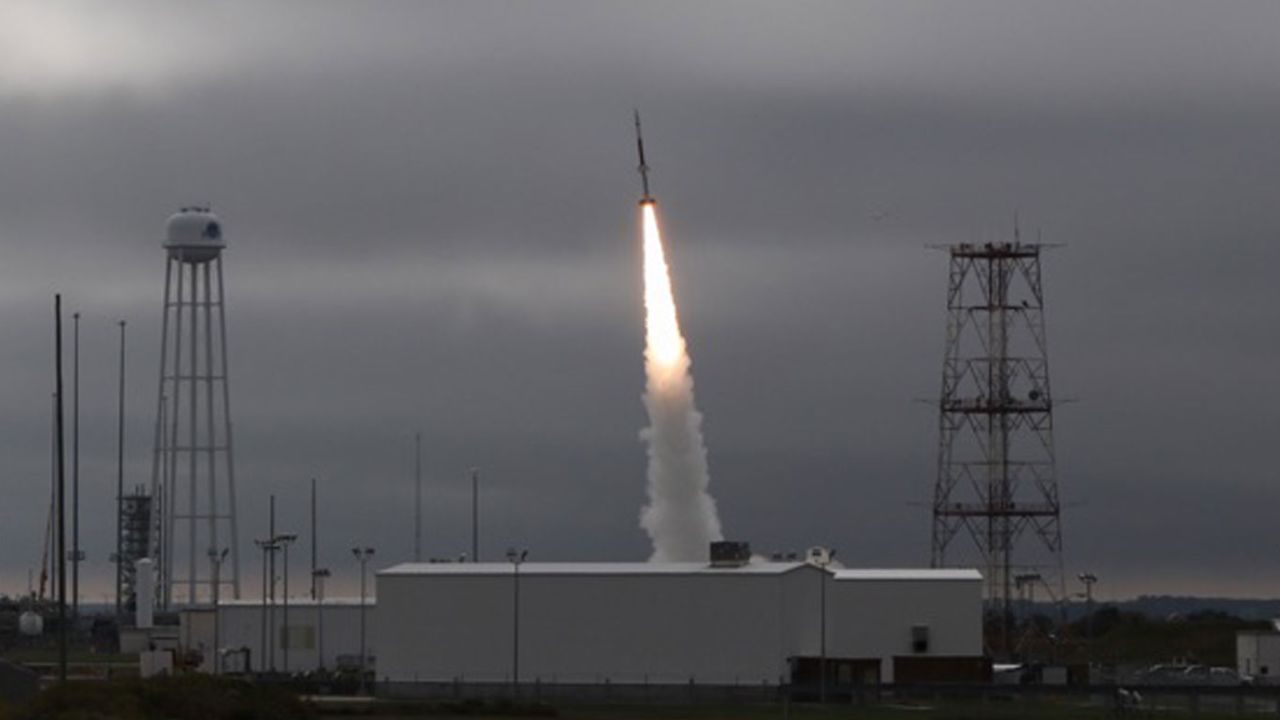(Trends Wide) — The US Army conducted a successful test launch of a missile with experiments for hypersonic weapons development at the Wallops Flight Test Center in Virginia on Wednesday.
The missile was carrying 11 different experiments designed to test and collect data for hypersonic weapons research to support the joint Army-Navy program, the Navy said.
This was the second test carried out within the framework of the program focused on the development of hypersonic capabilities both at sea and on land. The first test was carried out in October 2021.
In this test, a probe missile was fired from the launch pad, conducting different experiments to collect data and information on hypersonic missile components, including heat-resistant materials and high-end electronics.
“Today’s launch went extremely well,” said Vice Admiral Johnny Wolfe, director of Strategic Systems Programs who oversaw the test. “In fact, we just finished reviewing our key observables, and all the data that we wanted to collect, at least preliminary, showed that we’ve collected all that data.”

The US Army conducted a successful test launch of a missile with components for hypersonic weapons development at the Wallops Flight Test Center in Virginia on Wednesday. Credit: Danielle Johnson/NASA
A second missile is expected to launch Thursday that will carry out 13 more experiments aimed at informing the development of hypersonic weapons, according to the Navy.
The data collected from these tests will aid in the development of the Navy’s Conventional Prompt Strike hypersonic system and the Army’s Long Range Hypersonic Weapon (LRHW). Both programs will use the common hypersonic glide body, a projectile carried on a booster rocket that heads toward its target at speeds greater than Mach 5.
Hypersonic weapons travel at speeds greater than Mach 5, that is, at about 14,400 kilometers per hour, which makes their timely detection and interception difficult. The missiles can also maneuver and vary their altitude, allowing them to evade missile defense systems.
The Pentagon has made developing hypersonic weapons one of its top priorities after China successfully carried out hypersonic launches last year and Russia began using hypersonic missiles in its war in Ukraine.
After China tested a hypersonic weapon in 2021, Chairman of the Joint Chiefs of Staff Gen. Mark Milley called the test “a very significant technological milestone” that is just one element of China’s military capabilities.
“China’s military capabilities are far greater than that” single test, Milley said in October 2021. “They are rapidly expanding in space, in cyberspace, and then in the traditional domains of land, sea and air.”
(Trends Wide) — The US Army conducted a successful test launch of a missile with experiments for hypersonic weapons development at the Wallops Flight Test Center in Virginia on Wednesday.
The missile was carrying 11 different experiments designed to test and collect data for hypersonic weapons research to support the joint Army-Navy program, the Navy said.
This was the second test carried out within the framework of the program focused on the development of hypersonic capabilities both at sea and on land. The first test was carried out in October 2021.
In this test, a probe missile was fired from the launch pad, conducting different experiments to collect data and information on hypersonic missile components, including heat-resistant materials and high-end electronics.
“Today’s launch went extremely well,” said Vice Admiral Johnny Wolfe, director of Strategic Systems Programs who oversaw the test. “In fact, we just finished reviewing our key observables, and all the data that we wanted to collect, at least preliminary, showed that we’ve collected all that data.”

The US Army conducted a successful test launch of a missile with components for hypersonic weapons development at the Wallops Flight Test Center in Virginia on Wednesday. Credit: Danielle Johnson/NASA
A second missile is expected to launch Thursday that will carry out 13 more experiments aimed at informing the development of hypersonic weapons, according to the Navy.
The data collected from these tests will aid in the development of the Navy’s Conventional Prompt Strike hypersonic system and the Army’s Long Range Hypersonic Weapon (LRHW). Both programs will use the common hypersonic glide body, a projectile carried on a booster rocket that heads toward its target at speeds greater than Mach 5.
Hypersonic weapons travel at speeds greater than Mach 5, that is, at about 14,400 kilometers per hour, which makes their timely detection and interception difficult. The missiles can also maneuver and vary their altitude, allowing them to evade missile defense systems.
The Pentagon has made developing hypersonic weapons one of its top priorities after China successfully carried out hypersonic launches last year and Russia began using hypersonic missiles in its war in Ukraine.
After China tested a hypersonic weapon in 2021, Chairman of the Joint Chiefs of Staff Gen. Mark Milley called the test “a very significant technological milestone” that is just one element of China’s military capabilities.
“China’s military capabilities are far greater than that” single test, Milley said in October 2021. “They are rapidly expanding in space, in cyberspace, and then in the traditional domains of land, sea and air.”






